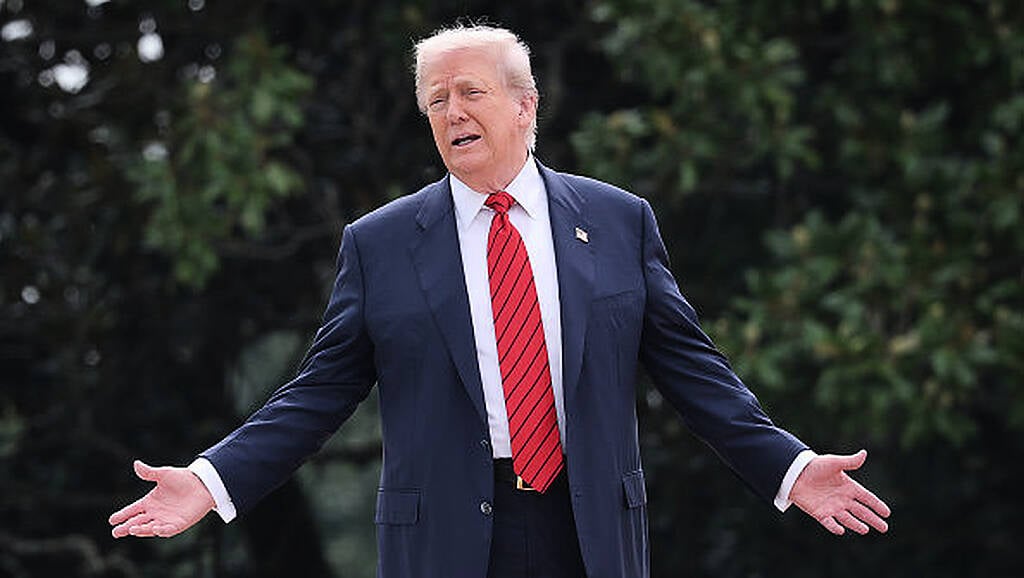Business
Trump Proposes Tariff Hike on Pharmaceuticals to Boost US Production

President Donald Trump announced on October 10, 2023, plans for a significant increase in tariffs on pharmaceutical imports to encourage domestic production. During an interview with CNBC, Trump revealed that the United States would initially implement a “small tariff” on pharmaceuticals, which he aims to increase to 150% within 18 months, and eventually to 250%.
While the initial tariff rate remains unspecified, Trump indicated that these measures are part of a broader strategy to prioritize American manufacturing. He mentioned that the pharmaceutical industry has been under scrutiny as part of a national security review, and the administration has yet to release the findings of that investigation.
Trump’s comments follow previous statements where he suggested that pharmaceutical tariffs could escalate to as high as 200%. He has also indicated plans to impose similar tariffs on semiconductor imports, with an announcement expected in the coming week.
Impact on Pharmaceutical Industry
The proposed tariffs could have significant implications for the pharmaceutical sector, which employs approximately 45,000 individuals in Ireland alone. This region is a major exporter of pharmaceuticals to the United States, with total Irish exports valued at €223.8 billion in the past year. Approximately one third of these exports go to the US, and of the €72.6 billion in US imports from Ireland, roughly €58 billion is attributed to pharmaceuticals and chemicals.
Drug manufacturers are preparing for potential tariffs, with some companies already making substantial investments in US operations. Notably, AstraZeneca recently announced a commitment of $50 billion to expand its manufacturing capabilities in the United States.
The Pharmaceutical Research and Manufacturers of America (PhRMA), which serves as the main lobbying group for the industry, has not yet commented on Trump’s latest proposals. The current framework agreement between the United States and the European Union sets tariffs on pharmaceuticals and semiconductors at zero, but any increase from the US could be capped at 15%.
As the situation develops, industry stakeholders will be closely monitoring the administration’s actions and the potential impacts on both domestic and international markets.
-

 Top Stories3 months ago
Top Stories3 months agoTributes Surge for 9-Year-Old Leon Briody After Cancer Battle
-

 Entertainment4 months ago
Entertainment4 months agoAimee Osbourne Joins Family for Emotional Tribute to Ozzy
-

 Politics4 months ago
Politics4 months agoDanny Healy-Rae Considers Complaint After Altercation with Garda
-

 Top Stories4 months ago
Top Stories4 months agoIreland Enjoys Summer Heat as Hurricane Erin Approaches Atlantic
-

 World5 months ago
World5 months agoHawaii Commemorates 80 Years Since Hiroshima Bombing with Ceremony
-

 Top Stories3 months ago
Top Stories3 months agoNewcastle West Woman Patricia Foley Found Safe After Urgent Search
-

 Top Stories5 months ago
Top Stories5 months agoFianna Fáil TDs Urgently Consider Maire Geoghegan-Quinn for Presidency
-

 World5 months ago
World5 months agoCouple Convicted of Murdering Two-Year-Old Grandson in Wales
-

 World5 months ago
World5 months agoGaza Aid Distribution Tragedy: 20 Killed Amid Ongoing Violence
-

 World5 months ago
World5 months agoAristocrat Constance Marten and Partner Convicted of Infant Murder
-

 Top Stories4 months ago
Top Stories4 months agoClimbing Errigal: A Must-Do Summer Adventure in Donegal
-

 Top Stories4 months ago
Top Stories4 months agoHike Donegal’s Errigal Mountain NOW for Unforgettable Summer Views









